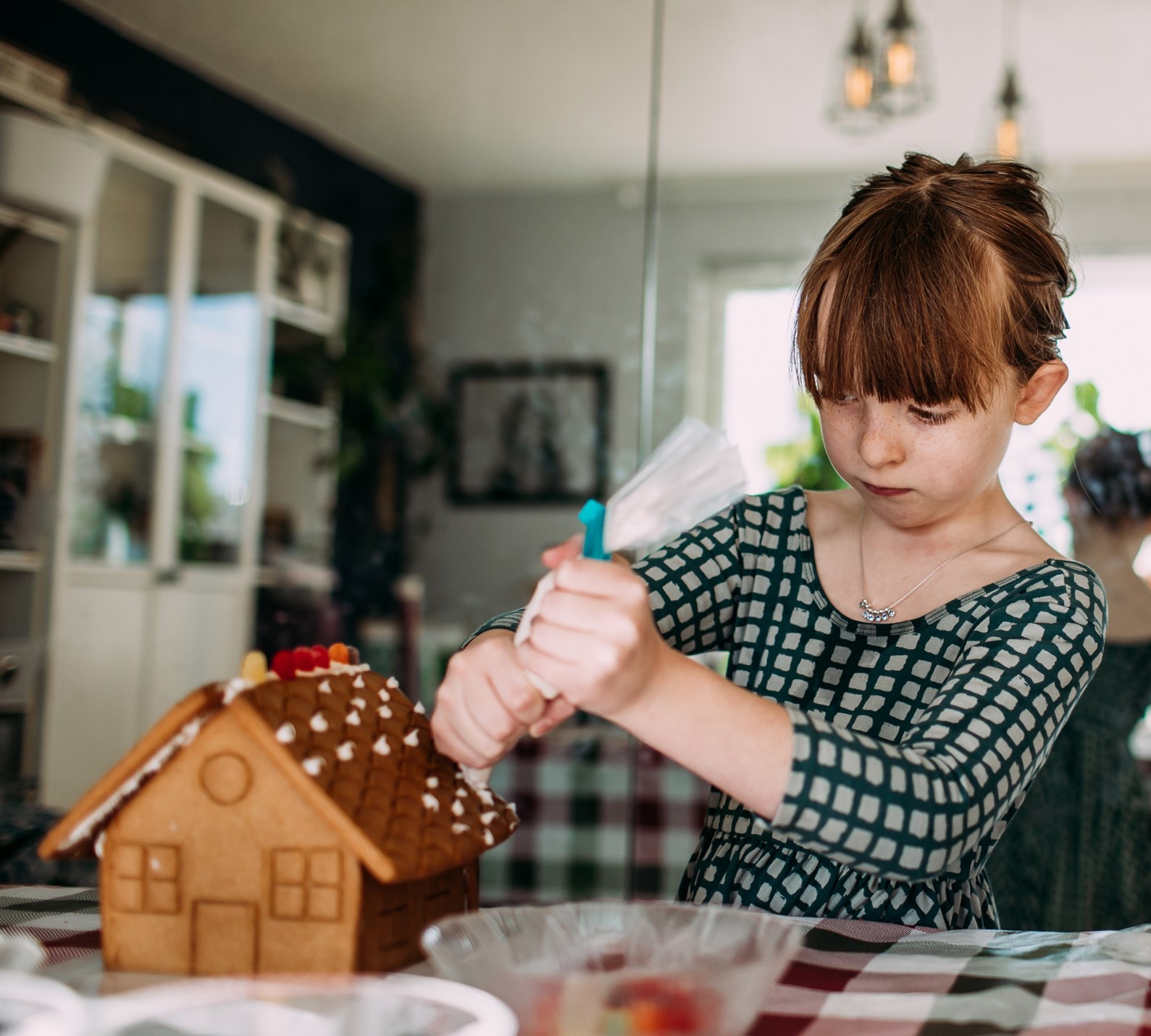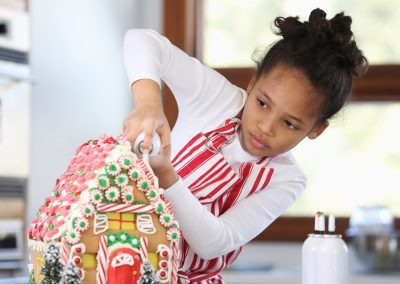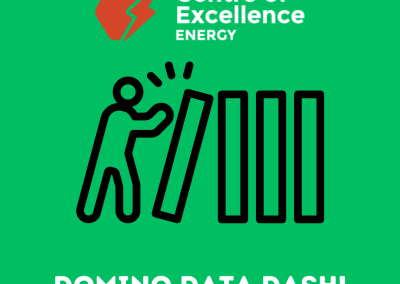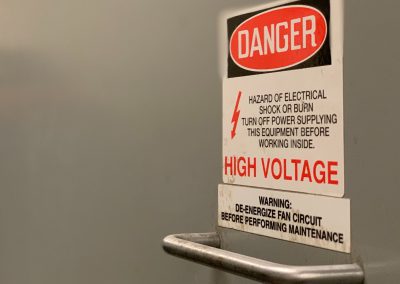French Resources Included
Overview
Imagine a tree falling on your house – just before the holidays! In this hands-on and cross-curricular activity, younger learners will have the opportunity to plan and build energy-efficient gingerbread houses to solve a housing problem for a small, forest friend.
NB Curriculum Connections
English Language Arts
- Strand: Reading – Big Idea: Reading Comprehension – Skill Descriptor: Construct meaning from oral stories, read-alouds, and text.
Mathematics
- Strand: Number – Big Idea: Number Sense
Explore Your World
- Strand: Play and Playfulness – Big Idea: Exploration and Problem Solving – Skill Descriptors: Invent approaches to practical problems.
- Strand: Diversity and Social Responsibility – Big Idea: Sustainable Features
What You’ll Need
- Gingerbread Mouse book (By: Katy Bratun)
- Printable Energy-Efficient Scorecards (1 per small group – see attached PDF)
- PowerPoint Presentation (see PPT attached)
- Gingerbread House Kits (complete with walls, roof, icing, gumdrops, and peppermint candies; 1 per small group of 4-5 learners)
- Pencils
- 1 bag of mini marshmallows
- 1 package of pull and peel licorice
- 4-pack of chocolate bars (with squares – like Aero or Jersey Milk)
- 1 package of wafer cookies
- 1 package of 12 Sunrype Fruit To Go fruit strips
Instructions
Discussion: As a group, have learners identify products in the classroom that need energy to run (ex: look for items plugged in, heating sources, and types of light). Allow learners to share their thinking around this question: “What is energy-efficiency?” Energy-Efficiency simply means to reduce the use the amount of energy being used – we can do this through a variety of ways. Refer to Slide #2 of the PowerPoint Presentation. There are three ways to act out energy-efficiency:
- Upgrade appliances and home products that use less energy: Some older appliances use A LOT of energy but with technology and awareness, newer appliances use less. Home products, like lightbulbs, can be replaced and save a lot of energy each year.
- Change our daily habits: turning off lights when leaving a room, turn the tap off between brushing my teeth and rinsing, and unplugging unused electronics are just a couple of daily habits to help with energy-efficiency.
- Spread the word: Once we know, we have a responsibility to share what we know, because we all live on this beautiful planet of Earth.
Energy-Efficient House Products: Energy-efficiency doesn’t only happen on the inside of our houses! Show each slide, from 3-9 of the PowerPoint, and use the information below to explain, not only the energy-efficient product, but also the materials that learners will use in their own gingerbread house.
Weather Stripping (Slide 3)– Thin, sticky pieces of materials that help stop leaks in windows or doors. Leaks from wind or weather (rain or snow) can waste a lot of energy – actually almost 40% of a home’s heating or cooling costs! Remember when building your energy-efficient gingerbread house, you can add weather stripping with pull and peel licorice.
Solar Panels (Slide 4)– convert sunlight to heat energy through collectors, like small pipes. These collectors have a liquid in them that moves around and is heated by the sun, which creates energy that can be used to heat your home, power your appliances, and even heat your swimming pool. To add solar panels to your gingerbread house, use the squares from our chocolate bars.
Smart Meter (Slide 5) – is on the side of your house and can let you know, through technology, how much energy you are using at any time. No more estimating and no more manual readings by NB Power. They have workers who must drive around to each house and building and read the energy meter in order to send the bill. To add a smart meter, place a peppermint candy on the side of your gingerbread house.
Cool Roof (Slide 6) – On a hot, scorching summer day would you rather wear a black t-shirt or a white t-shirt and why? Allow learners to respond. It’s the same for our roof! Our roof can get up to over 100 degrees Celsius if it has dark or black shingles on a summer day, which means we’ll have to run more fans or air conditioning to cool it down. IF our roof was light or white to begin with, it will not heat up as much and we would use less energy to cool it down. Mini marshmallows can make your gingerbread have a cool roof.
Insulated Vinyl Siding (Slide 7) – an extra layer to protect from leaks of air. By adding this extra layer of insulation, between the outside and inside of a house, it also can reduce noise, hold up better against bad weather storms, and reduce energy. To add this to your gingerbread house, we’ll be using Sunrype Fruit Strips.
Heat Pump (Slide 8) – heats and cools houses using a lot less energy than electric heat, oil or propane sources. They don’t make heat or cool air, they simply move air inside and outside and keep temperatures steady. Wafer cookies will be used as heat pumps on our gingerbread houses.
LED Lights (Slide 9) – These types of lights change energy into light rather than heat, like traditional lights. LED lights last a lot longer and they use 90% less electricity than regular lights! Gumdrops will be used as LED lights for your gingerbread house.
Gingerbread Building Challenge & Read Aloud: Using Slide 10 of the PowerPoint Presentation, read the very first page of Gingerbread Mouse and introduce the challenge to your learners. Then, divide the class into smaller groups of 3-4 learners. Open the Gingerbread Kit boxes together and talk about the different pieces need to assemble a house – walls and a roof. Also explain that sometimes it is difficult building with delicate materials, so some grit and patience may be needed to finish well! Give each group a copy of their Energy-Efficient Scorecard (on Slide 11). Re-read the possible energy-efficient possibilities and then start the timer (on Slide 11) or feel free to set your own time limit. Let the building begin!
Energy-Efficient Scorecard Tally: As the timer stops, have students tally up how many energy-efficient products they were able to use in their design and fill out their scorecard. Once completed, do a Show and Share to allow the opportunity for learners to tell their peers about their design, their score, and their challenges. Discuss: What were some of the challenges that you had to face? What is your favorite part of your energy-efficient gingerbread house? What did you learn from this activity?
Read Aloud – Gingerbread Mouse: Continue and finish reading the rest of the Gingerbread Mouse story.
Extension Ideas
- Invite another class to come to your “Energy-Efficient Gingerbread House Showing” and have small groups present their designs and answer questions.
- What about the INSIDE of our houses? Using white paper, have learners design the inside of their energy-efficient gingerbread house with more energy-efficient products and appliances.
- Go on an Energy-Efficient Community Walk and see how many of the energy-efficient products that we learned about from this learning opportunity, are visible in our community.
Reflection Activity
Please see the attached PDF for several choices on how you and your learners can reflect upon today’s activity.




